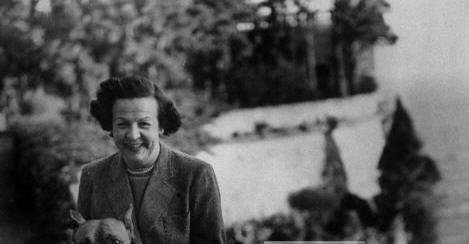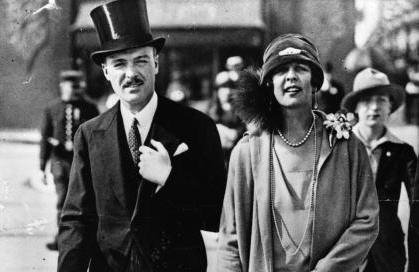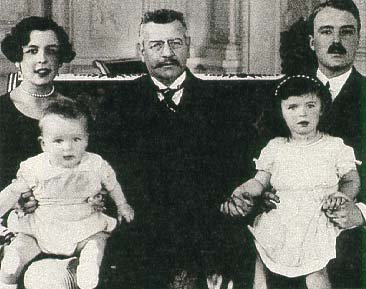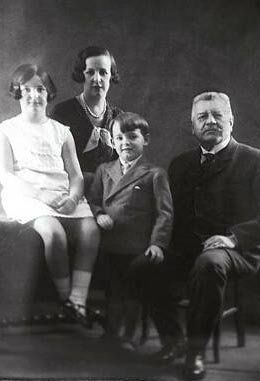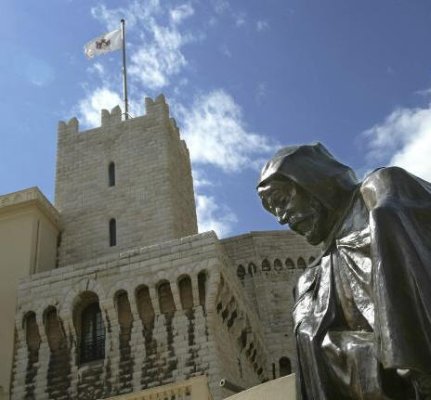Monaco - Centre de Presse
The Centre de Presse is the official distribution channel for information and photographs of the Principality of Monaco.
"From the Paleolithic Age to the Grimaldi's
The region of Monaco was inhabited by man since the end of the Paleolithic age, some 300 000 years B.C.. The region of the Ligures was established around year 2000 B.C..
The oldest existing references to Monaco are found in the writings of Hecatee de Milet in his Periegese, Monoios Polis Ligustike (Monaco, Ligurian city).
From the time of the Diocletian persecutions, a young Corsican Christian named Devote, was executed by order of governor Barbarus. Devote's body was placed at the bottom of a boat destined for Africa. However, contrary winds brought the boat drifting back to Monaco's shores, to the river outlet of the small valley Gaumates. At this site, a church was erected in dedication to Saint Devote who became Patron Saint of the Principality.
After the barbarian invasions of the Middle Ages, and the Muslim pirate raids, the Republic of Genova stretched its authority throughout the Ligures. The emperors Frederic Bareberousse and Henri VI successively recognized the Genovese power stretching from Porto Venere to Monaco, where in 1215, the Genovese began the construction of the four towers and the ramparts which still today delineate the perimeters of the Princes Palace.
At the end of the XIIIth century, on January 8, 1297, following a battle won by the Ghibellines in Genova , the Guelf Francois Grimaldi, (a.k.a. Malizia), seized the citadel of Monaco, from which he was chased four years later. Francois Grimaldi is a cousin of Rainier I father to Jean I, first Lord of Monaco (see Grimaldi's genealogical tree).
At the service of Philippe le bel, Rainier I conquered the dutch at Ziriksee. This victory earned him the title of Admiral to France. He is considered the founder of the Monaco Grimaldi dynasty.
The Lords of Monaco
Charles I, son of Rainier I, participated in the battle of Crecy as well as in the siege of Calais, died during the siege of Monaco at the hand of the doge of Genova, Simon Boccanegra. Monaco fell back into the hands of the Genovese.
Rainier II, son of Charles I, succeeded in preserving Menton and quickly recuperated Roquebrune. His three sons, Ambroise, Antoine and Jean soon came to rule Monaco sharing the Lordship of Monaco until Jean I was declared sole Lord.
Prisoner of the Duke of Milano who threatened Jean I s' execution if Monaco was not released to his power, Jean I asked his wife Pomelline to resist against the opponent. Her tough and courageous attitude was catalyst to his release.
His son, Catalan, reigned for only three years during which he concluded an alliance with the king of France, Charles VII. He chose a husband for his daughter Claudine, his own cousin Lambert, a marriage to be consummated as soon as she was to turn fifteen years of age. Fourteen children were born from this union.
Lambert an excellent diplomat, was designated counselor and chamberlain to the king of France, Charles VIII. It is from his letters in which he often used the expression, which has become the Princes of Monaco's motto, "Deo Juvante" (With the aid of God)
Jean II, Lambert's oldest son, pursued the wise politics of his father. He died in a quarrel with his brother Lucien. Murder or accident ? Historians have opted for the latter theory. Lucien I, at any rate, proved his heroism during the siege he upheld for one hundred days before making the Genovese retreat from their attempt to capture the citadel. After receiving letters from Louis II revering the "Lordship of Monaco is held in the hands of God and by the sword", he was assassinated by the partisans of Andrea Doria, the famous Genovese admiral and condottiere.
His brother, Augustin, bishop of Grasse, succeeded Jean II as Lord of Monaco for life. To mark his opposition to Andrea Doria who was allied with France, Augustin signed 'from principal to principal' the Burgos and Tordesillas treaties with Charles Quint, which placed Monaco under the protectorate of Spain. This alliance lasted for over a century, between 1525 to 1641.
At the death of Augustin, the son of Lucien, Honore I was still a minor. His tutor, Etienne, (a.k.a. the Gubernant) while scrupulously respecting the alliance with Spain, began planning procedures to consolidate and regained the Lordships autonomy.
Honore I had a relatively calm reign. His sons, Charles II and Hercule I pursued the Gubernant's politics and consecrated themselves to the administration of the fiefs that Charles Quint had given to them in the south of Italy, amongst which was the Marquisat of Campagna. Hercule was assassinated by conspirators. Honore II, his son was yet a minor and was placed under the tutelage of Prince Frederic Landi de Valdetare.
Highly cultured, Honore II renovated the Princes palace which he enriched with luscious furniture, masterpiece paintings and objets d'art. He pressed money coins and took the title of Prince. After having signed a treaty in Peronne in 1641 in alliance with the king of France Louis XIII, he expelled the Spanish garrisons. In compensation for lost territories in the south of Italy, the king of France bestowed him with various fiefs and received him at court in great pomp. Louis XIV became the godfather to his grandson Louis.
The Princes of Monaco
Louis I, son of Hercule (accidentally deceased) succeeded his grandfather Honore II. Husband to Catherine-Charlotte de Gramont, he followed his wife to the courts of France. It is he who built the monumental gates of the Palace and the horseshoe stairways of the Cours d'Honneur. He published the statutes of Monaco (the legislative codes remarkably liberal in nature)
At the time when the question of who was to succeed to the throne of Spain, Louis XIV named him his Ambassador to the Holy See. After accomplishing his mission with both ostentation and dedication, Louis I dies in Rome in 1701.
The son of Louis I, Antoine I, who frequented the high aristocratic society, distinguished himself by engaging in the military. His size and courage in the battlefields of Fleurus, Mons and Namus earned him the nickname Goliath. He threw magnificent parties in the palace which he restored and fortified. A distinguished musician, he conducted his orchestra with the conductors stick bequeathed to him by Lully. He kept up a rich correspondence with the great composers of the times : Couperin, Destouches...
His eldest daughter, Louise-Hippolyte, married Jacques de Goyon-Matignon. She reigned but for a few months. Following her premature passing away, her husband became Prince of Monaco under the name of Jacques I. However, it was not long before he abdicated in favor of his still minor son Honore III.
After a brilliant military career, during which he participated in the battles of Fontenoy and of Raucoux, Honore III enjoyed a long period of peace and economic prosperity leaving the reigns of governing in the hands of the man who had been his tutor, the Knight of Grimaldi. His long reign which had started in most opportune conditions and happy auspices, sadly ended up in exile. The French revolution erased the Principality from the map of Europe and was renamed Fort-Hercule. The palace was pilfered, and Honore III was incarcerated in Paris. His daughter-in-law, Francoise de Choiseul-Stainville was guillotined at the age of 27. She was amongst those in the last cart with Andre Chenier.
Honore III died without recovering his rightful authority. His son Honore V, retrieved his sovereignty only after the first Treaty of Paris. Whiles ill, Honore III delegated his sovereign powers to his son Honore V, who after the second Treaty of Paris, was faced with great financial difficulties to re-establish Monaco, and was also faced with the supposed claim by the king of Sardegna as new protector of Monaco.
Florestan I, succeeded his brother Honore V. His reign was tainted by the relinquishing of Menton and Roquebrune which due to the French revolution of 1848, declared themselves as "free cities, placed under Sarde protection". This disguised annexation, in 1860 resulted in their reattachment to France at the time of the plebiscite organized by the Savoie and the county of Nice.
The Principality, amputated of nine-tenths of its territory, experienced a formidable expansion during the reign of Charles III. Efficiently helped to begin with by his mother, the Princess Caroline, Charles III signs on February 2, 1861, a treaty with Napoleon which addressed the Menton and Roquebrune issues, planned for the construction of the Moyenne Corniche, and for the placement of the railway tracks through Monaco on the Nice-Genova railway links, and above all, the creation of a customs union between Monaco and France to facilitate the liaisons between the two countries.
Prince Charles III renewed the economy, created the required infrastructures to launch tourism, urbanized the Spelugues quarters to which he gave the name Monte-Carlo in 1866 (in Italian, the Mount Charles), inaugurated the coastline road and the train stations of Monaco and Monte-Carlo, created the Post and Telegraphy Office, assured religious independence of the Principality by creating the bishopric, opened legations and consulates abroad, instituted the Order of Saint-Charles, pressed gold coins and printed the first Monegasques stamps.
Prince Albert I already had a long naval career and pursued scientific research at the time he succeeded his father, Prince Charles III. Without abandoning the work he was committed to, particularly in the field of oceanography, of paleontology, anthropology and botany, he favored international encounters, created the International Peace Institute, reformed the institutions, granted a constitution to the Monegasques, developed diplomatic relations and was patron to the arts in a period of brilliant and intense artistic life marked by the great operas at the Monte-Carlo Opera and by the establishment in Monaco of the famous Russian Ballets.
The Oceanographic Institute of Paris, the Oceanographic Museum of Monaco, the Human Paleontology Institute of Paris, the Prehistoric Anthropology Museum of Monaco, the Exotic Gardens, the International Hydrographical bureau, are the major testimonies of Prince Albert I's endeavors.
Prince Louis II succeeded his father in 1922.
During World War I, he enrolled as a voluntary in the French army. He was cited at several occasions for his heroic conduct which later merited him with amongst others, the War Cross, and the grade of Division General. During the challenging period of his reign which began at the end of World War I, and ended at the end of World War II, Prince Louis II was successful despite the world economic crisis which plagued the 30's, and despite the two periods of foreign occupation, to safeguard and complete the endeavors of his predecessors.
Prince Rainier III, grandson of Prince Louis II on his mothers side, Princess Charlotte and son of Prince Pierre, Count of Polignac, succeeded his grandfather on May 9, 1949. "
Significant Dates in the History of the Principality
1297 : Francois Grimaldi and his Guelph partisans seize the fortress of Monaco
1346 : Charles Grimaldi acquires Lordship over Menton
1355 : Charles Grimaldi acquires Lordship over Roquebrune
1489 : King of France, Charles VIII recognizes the independence of Monaco
1512 : Monaco's independence is confirmed by king Louis XII
1515 : King Francois I recognizes the independence of Monaco
1524 : Augustin I places Monaco under the protectorate of Spain
1614 : Honore II takes the title of Prince of Monaco
1641 : End of Spanish protectorate. Honore II signs the Treaty of Peronne with Louis XII, which assures the Principality of "France's protective friendship". In compensation for the loss of the advantages consented to by the Spanish, the Prince of Monaco receives fiefs in France. During his reign, Prince Honore II engages in the restoration and decoration of the palace.
1662 : Prince Honore II dies ; his grandson Prince Louis I succeeds to the throne
1698 : Louis XIV assigns Louis I the Ambassadorship to the Holy See
1701 : Louis I dies ; is succeeded by his son Antoine I, married to Marie de Lorraine who is related to the throne of France. During his reign, the Principality is endowed with new fortifications.
1731 : Antoine I dies leaving no male heir to the throne. His daughter, Louise-Hippolyte succeeds him, but dies barely a few months later. Her husband, Jacques de Goyon, Sire of Matignon, becomes Prince of Monaco
1733 : Jacques I abdicates from the throne leaving it to his son, Prince Honore III who is 13 years of age
1793 : The Principality is absorbed into French territory under the name of Fort Hercules and becomes the major Canton of the Alpes-Maritime, then turns to being a simple commune.
1795 : Prince Honore III dies in Paris
1814 : The Grimaldi's of Monaco re-established their Sovereign powers and rights (renewed enforcement of the Treaty of Peronne)
1815 : The Treaty of Paris (20 November 1815) places the Principality under the protectorate of the king of Sardinia.
1817 : The Treaty of Stupiniggi (8 November 1817) places Monaco under the protection of Sardinia
1841 : Honore V dies; his bother Florestan I becomes Prince of Monaco
1848 : Revolution in Menton and Roquebrune, proclaim themselves free cities
1856 : Florestan I dies; his son Charles III succeeds him
1860 : With the Treaty of Turin, King Victor-Emmanuel II of Italy cedes the Savoie and the county of Nice to Napoleon III
1861 : Charles III cedes his rights over Menton and Roquebrune to France by signing a treaty guaranteeing the independence of Monaco
1863 : Foundation of the Societe des Bains de Mer operating the Casino and several hotels in the 'Spelugues' sector of Monaco
1866 : The sector known as the 'Spelugues' changes its identity to Monte-Carlo
1889 : Prince Charles III dies; accession to the throne of his son Prince Albert I whose discoveries in oceanography and paleontology earn him high recognition in the scientific field worldwide.
1911 : Prince Albert I promulgates the first Constitution
1922 : Prince Albert I dies, he is succeeded by his son Prince Louis II, French army General
1949 : Prince Louis II dies ; succeeded by his grandson HSH Prince Rainier III (born in 1923)
1951 : Signature of the Franco-Monegasque Convention of good neighbor policy and reciprocal administrative support
1956 : Prince Rainier III marries Miss Grace-Patricia Kelly
1957 : Birth of HSH Princess Caroline
1958 : Birth of HSH Hereditary Prince Albert
1962 : Promulgation of the new Constitution
1963 : (May 18) New conventions are signed in Paris. The founding texts which constitute the agreements between France and the Principality are the treaties of February 2, 1861; July 17, 1918; the conventions of April 14, 1945 and the agreements of May 18, 1963
1965 : Birth of HSH Princess Stephanie
1966 : Monte-Carlo's Centennial. The State becomes the major shareholder of the Societe des Bains de Mer. A significant incident impacting the activity of its enterprises and employment
1974 : 25th anniversary of the reign of HSH Prince Rainier III
1981 : HSH Hereditary Prince Albert places the cornerstone of the Fontvieille construction
1982 : Princess Grace dies
1989 : 40th anniversary of HSH Prince Rainier III's reign
1993 : Monaco becomes member of the United Nations (May 28)



